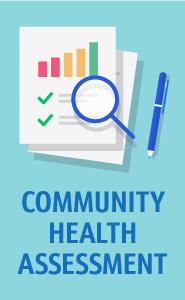Boil water notices, floods and power outages pose risks to businesses, especially those in the food industry. Stay informed on how to keep your business safe should disaster strike.
Boil Water Alert/Interruption of Water Supply
Use approved sources of water:
- Commercially bottled water
- Water that has been heated to a rolling boil for two minutes
Only approved sources of water shall be used for the following activities:
- Cleaning and sanitizing utensils and equipment
- Hand washing
- Food preparation
- Beverages and ice
Handwashing facilities: Water from an approved water source must be dispensed using a container with a spigot (commercially bottled water with a spigot or approved water in a cooler with a spigot). Soap and individual disposable towels must be provided for employee handwashing. Lather hands with soap for 20 seconds, rinse, dry and then use gloves or utensils.

After a boil water notice has been lifted, flush lines for one minute before using water.
Flooding
Food safety relies on these important steps if water comes in:
- Monitor food for time and temperature abuse
- Assess exposure to floodwater
- Destroy contaminated and temperature-abused products
- Thoroughly clean all surfaces regardless of food contact.
Clean the establishment according to the standard operating procedures in place for your organization. Use potable water only.
For food-contact surfaces:
- Wash with soap and warm water.
- Rinse with hot water.
- Sanitize with bleach solution (One capful of bleach for each gallon of warm water)
For non-food-contact surfaces:
- Sanitize with four capfuls of bleach for each gallon of warm water.
Proper disposal of food products:
- Discard all food and packaging materials that have been submerged in flood waters.
- Complete proper and safe disposal of condemned food items in a manner consistent with federal, state and local waste-disposal regulations.
Inspecting equipment:
- Remove and replace all filters on equipment if not designed to be cleaned in place.
- Flush all water lines (including steam and ice machine water for 10-15 minutes.
- Inspect equipment to ensure it is completely operational.
- Clean and sanitize equipment according to manufacturers' instructions or use the cleanup guidelines.
- Use only potable water for cleaning the equipment and the establishment.
Power Outages
Food safety relies on these important steps if the lights go out:
- Monitor food for time and temperature abuse
- Destroy contaminated and temperature-abused products
- Thoroughly clean all surfaces regardless of food contact.

While the power is out:
- Food must be under proper temperature conditions to be safe to eat.
- Discard food that has exceeded 41 degrees Fahrenheit for four hours or more.
- Analyze equipment temperatures with calibrated thermometers.
When power is restored:
- Ensure that refrigerators and freezers hold temperatures below 41 degrees Fahrenheit before putting food items inside.
- Ensure that equipment can heat or cool to the correct temperature.
- Ensure that all equipment used for cooking, cooling and reheating food is functional before use.
- Clean and sanitize equipment before resuming operations after a long power outage.


